1lumen selects and reviews products personally. We may earn affiliate commissions through our links, which help support our testing.
Astrolux FT03S copper review
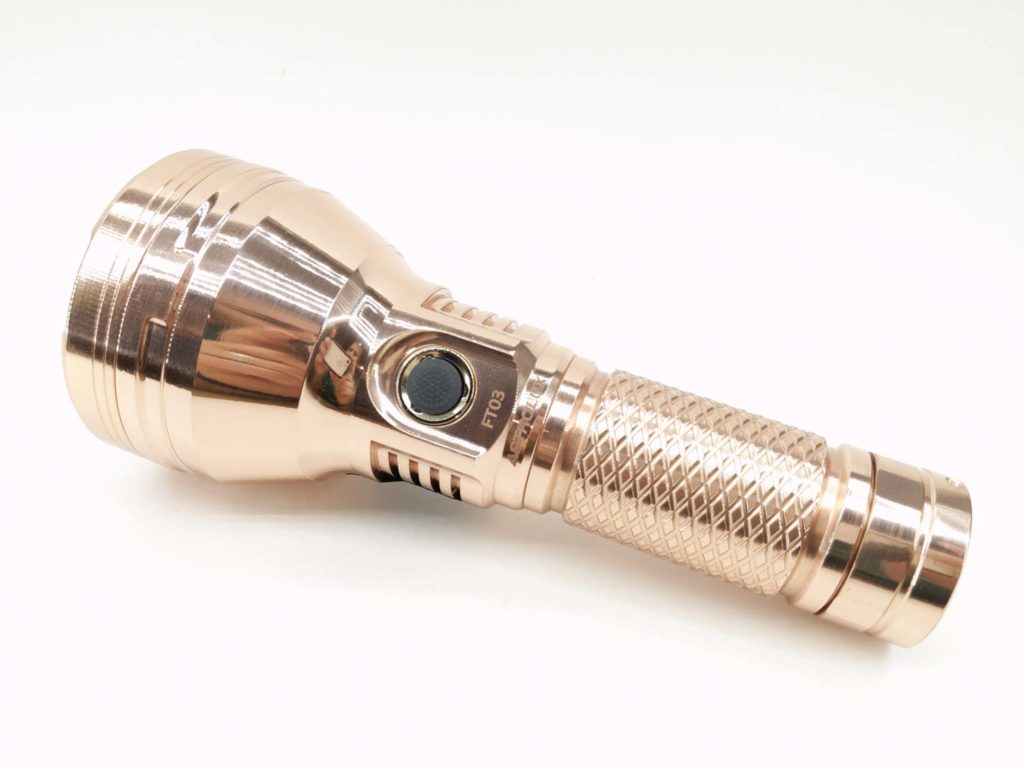
Astrolux FT03S copper specifications
| Brand/model | Astrolux FT03S copper |
|---|---|
| LED | Luminus SBT90.2 |
| Lumens | 4,500 lm |
| Beam intensity | 510,000 cd |
| Battery config. | 1*26650 |
| Material | Copper |
| Modes | Multi (Anduril) |
| Blinkies | Multi (Anduril) |
| Reflector | Smooth |
| Waterproof | IPX7 |
| Review date | January 2021 |
Introduction:
Giggle.
I couldn’t help myself… that was my reaction when I opened the package and first laid eyes upon the Astrolux Copper FT03. I had thought the Astrolux Copper FT03 Mini was really something to behold. But this… I feel like I’m holding a gold bar or trophy or something. It’s so absolutely unnecessary and amazing both at the same time. And when equipped with the powerhouse Luminus SBT90.2 such as this one is, this isn’t an “all show and no go”… you get the show and the go!
This copper flashlight is a limited edition for Astrolux’s 5th anniversary.
Package quality.
The Copper FT03 arrived in fairly typical Astrolux packaging – a nice sturdy white box with an image of the flashlight embossed in silver. Inside is white foam padding, cut out to hold the light. Inside that white box was the following:
- Astrolux Copper FT03
- Spare o-rings
- Lanyard
- Manual
- 18650 adapter
I’m kinda sad to see that there’s not a pocket clip included. Kidding! This thing isn’t fitting in your pants pocket unless you’re wearing JNCOs.
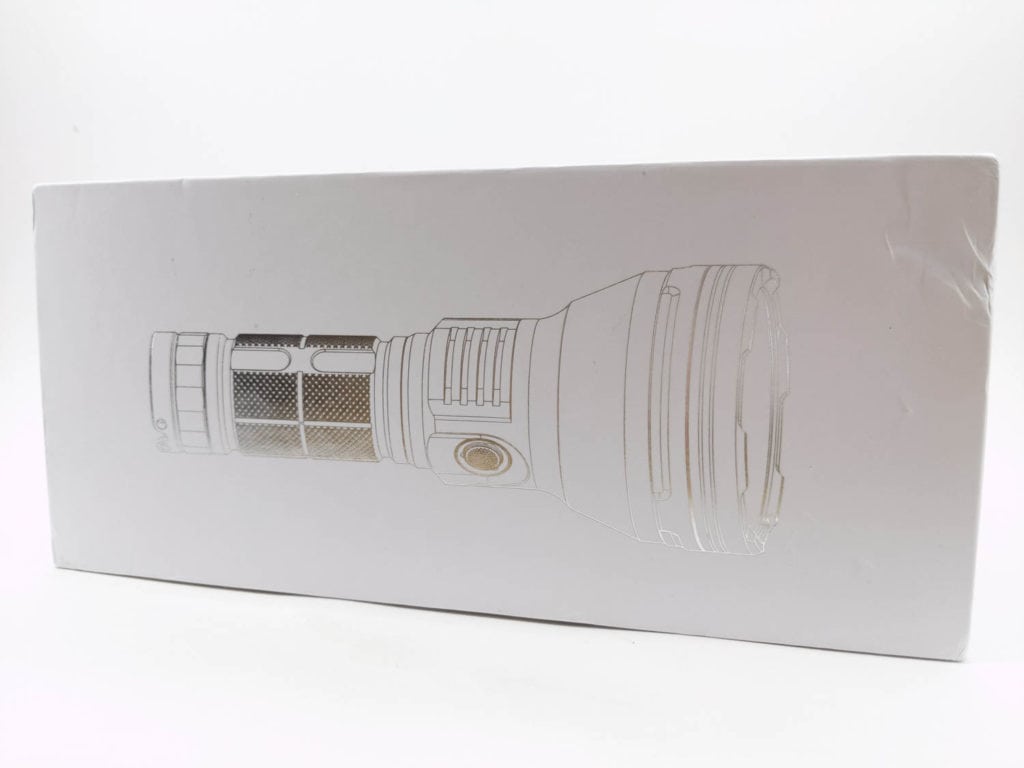
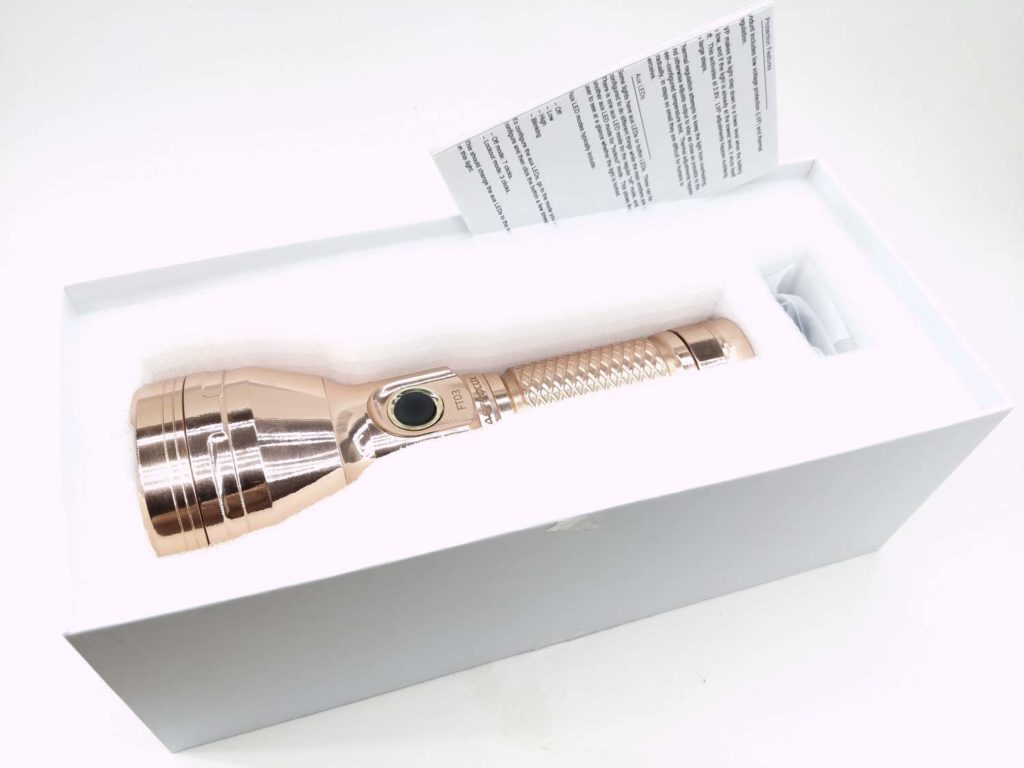
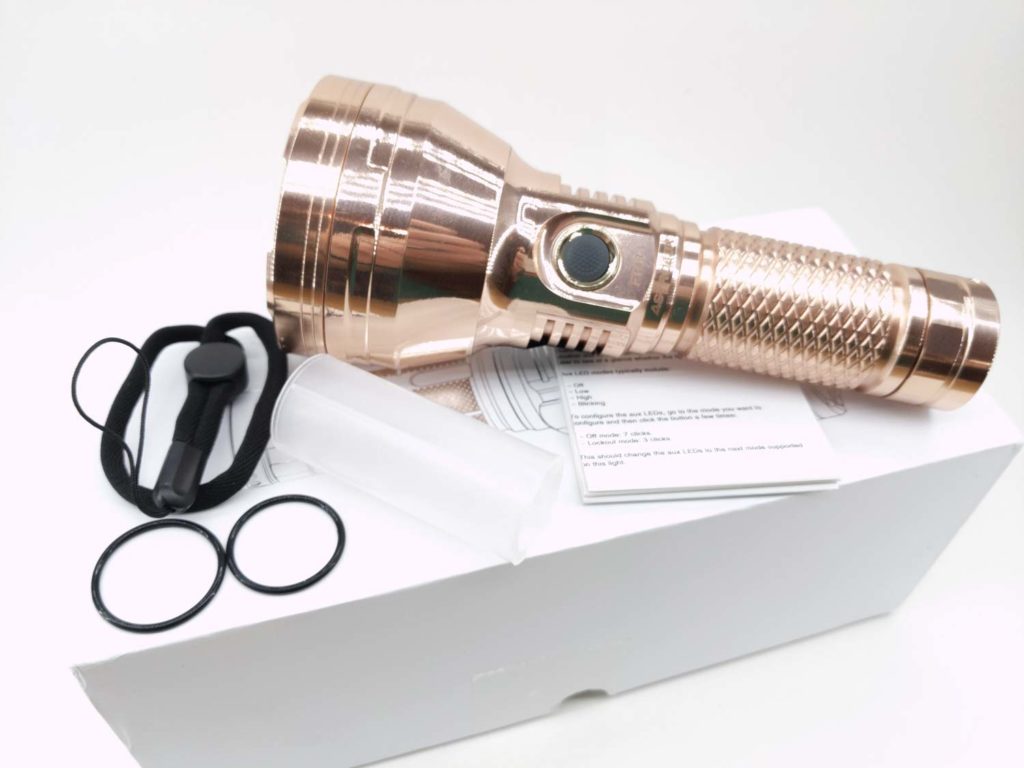
Handling of the light
With the Copper FT03 being polished and coated, it’s a bit slick. The large knurling on the battery tube does help to provide a decent amount of grip. It’s large. And heavy. You’ll certainly want to keep a good grip on it. A lanyard might not be a bad idea, so as to prevent accidental drops and dinging up that beautiful finish. But I would not rely on the lanyard wrist strap that is included in the box. With the FT03 weighing almost 2 pounds, I would want a more sturdy lanyard – paracord, perhaps?
There is a single button – an e-switch that is located on the side of the head. It is covered with a rubber button that has indicator LEDs underneath it.
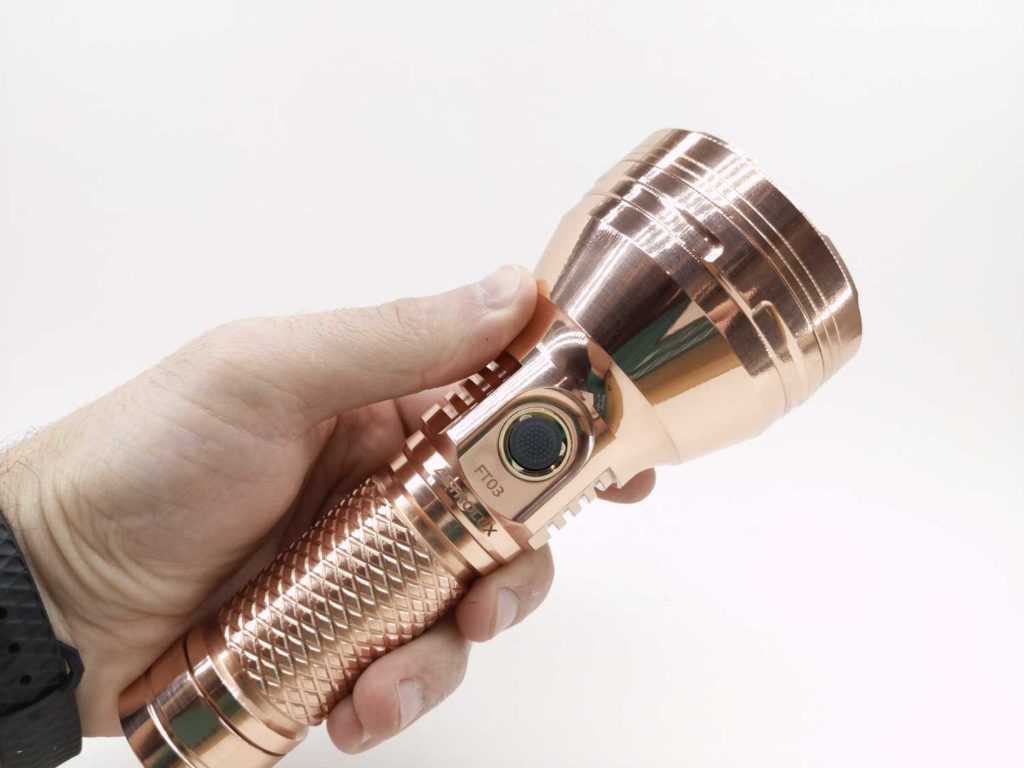
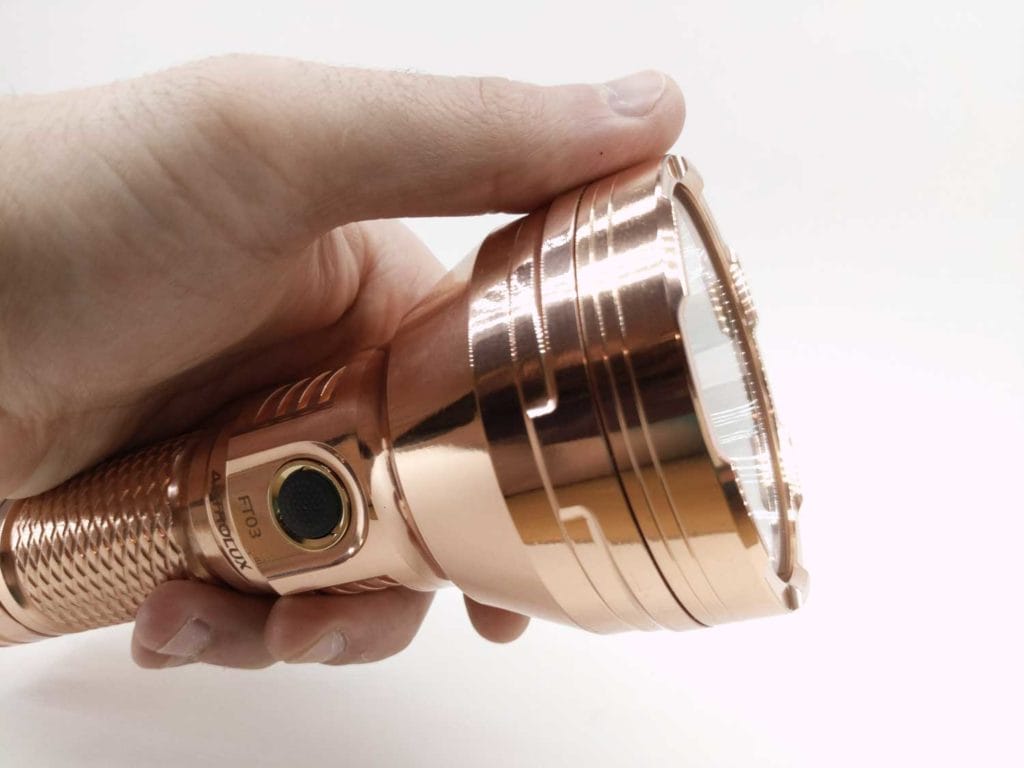
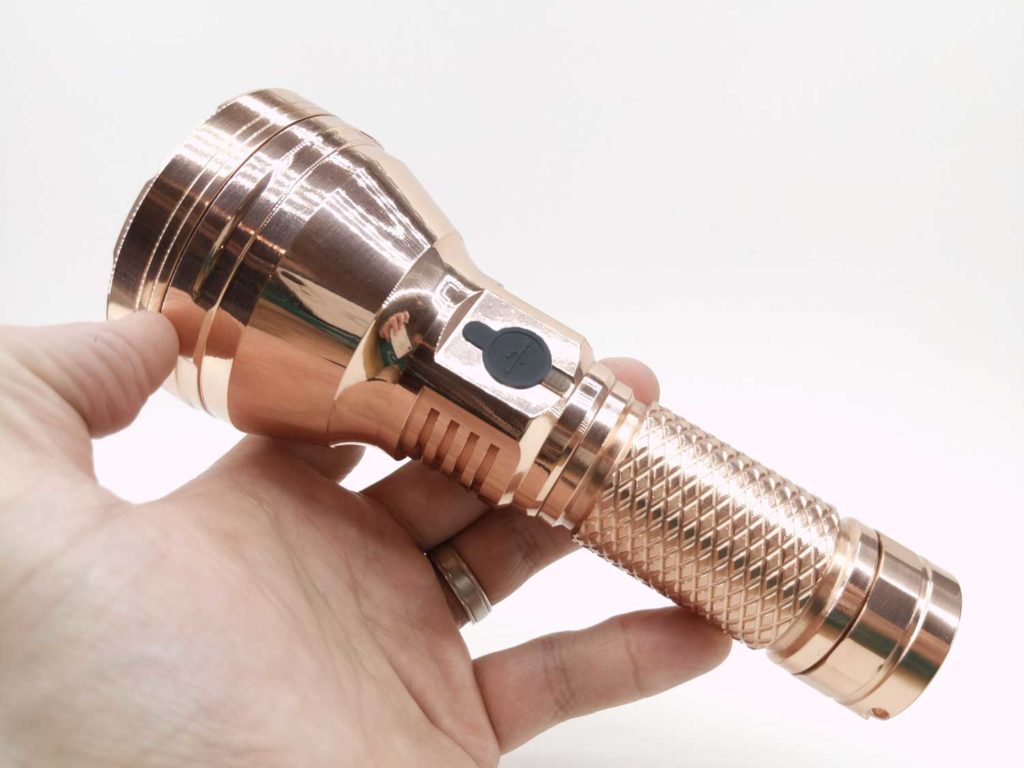
Build Quality, and Warranty
Copper. Nice, shiny, copper. So smooth that I can see my reflection in it. The copper appears to be coated, so it should retain it’s sheen unless you were to strip the coating. The FT03 arrived in very good condition – I don’t really see any scrapes or knicks.
The machining of the copper FT03 appears to be good. I don’t feel any rough edges. The threads at both ends of the body tube are clean and square-cut. Both the driver and tailcap have dual springs.
Warranty… the manual makes no mention of it. And I don’t see anything on Banggood’s website regarding a warranty, unfortunately.
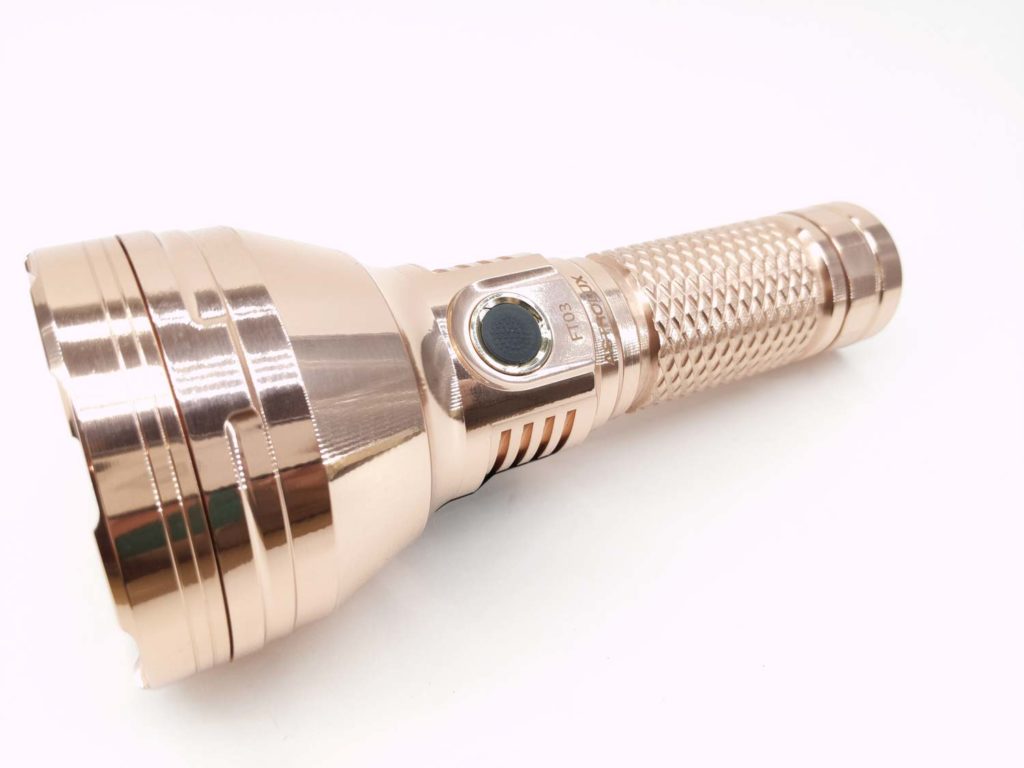
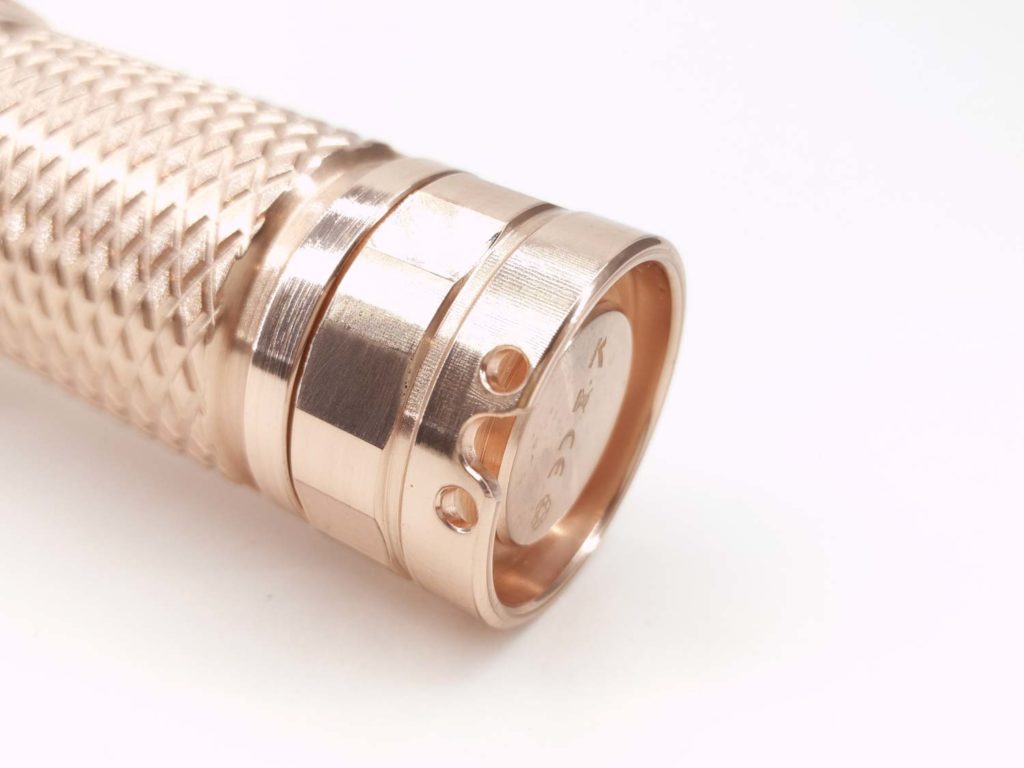
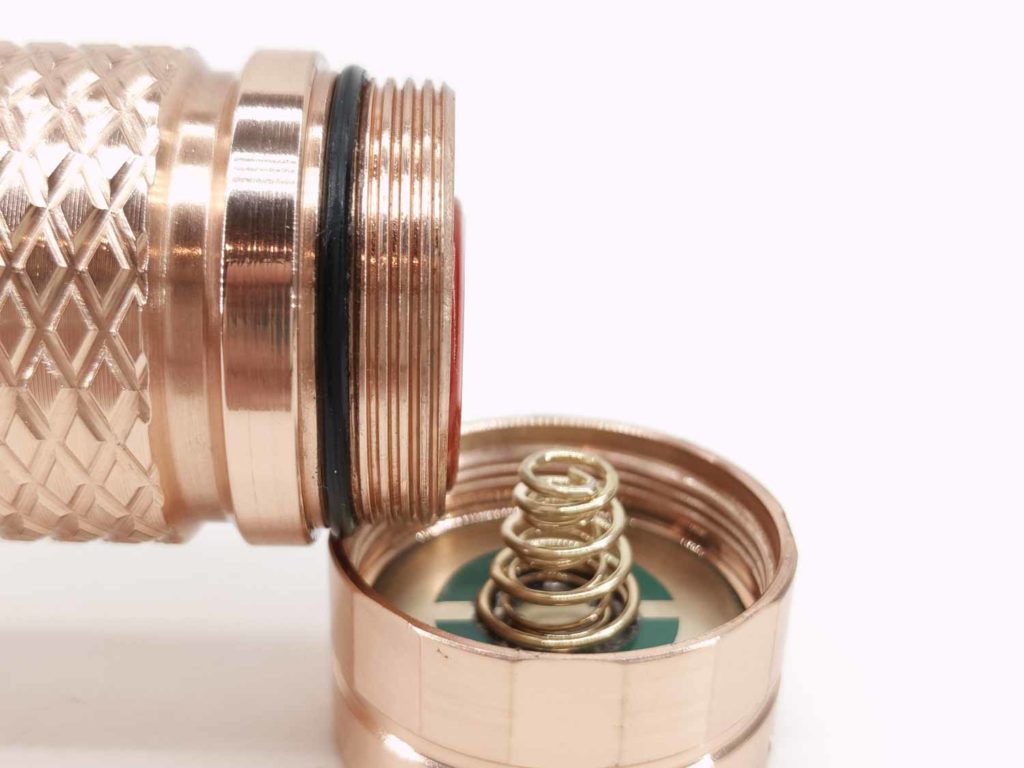
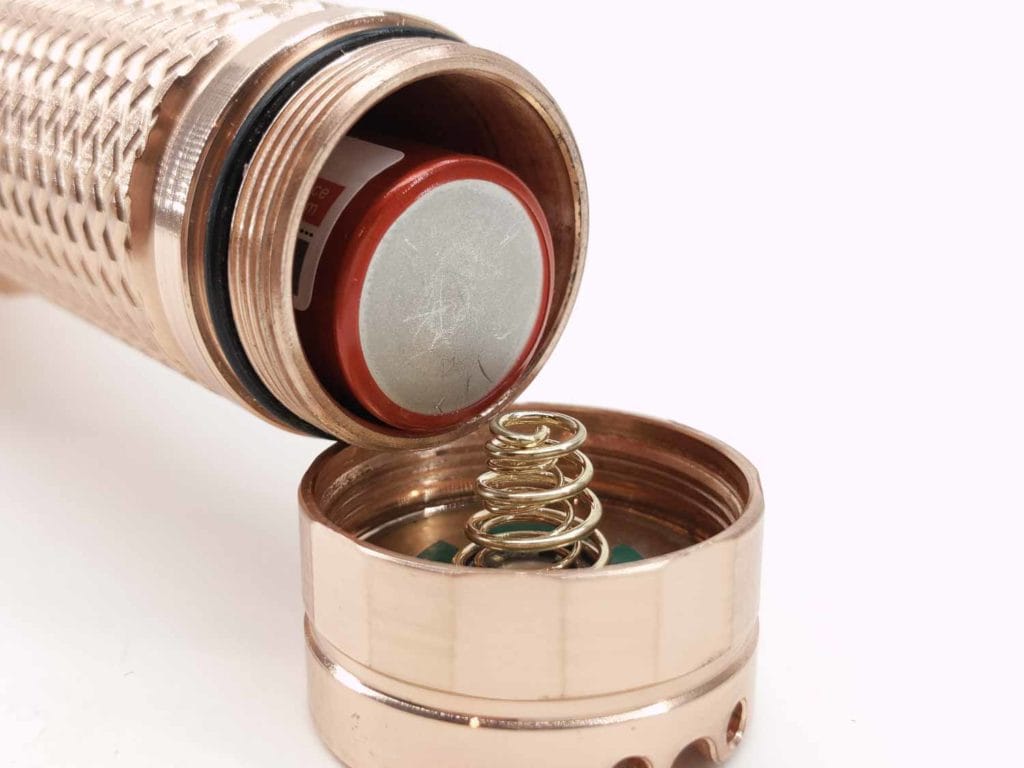
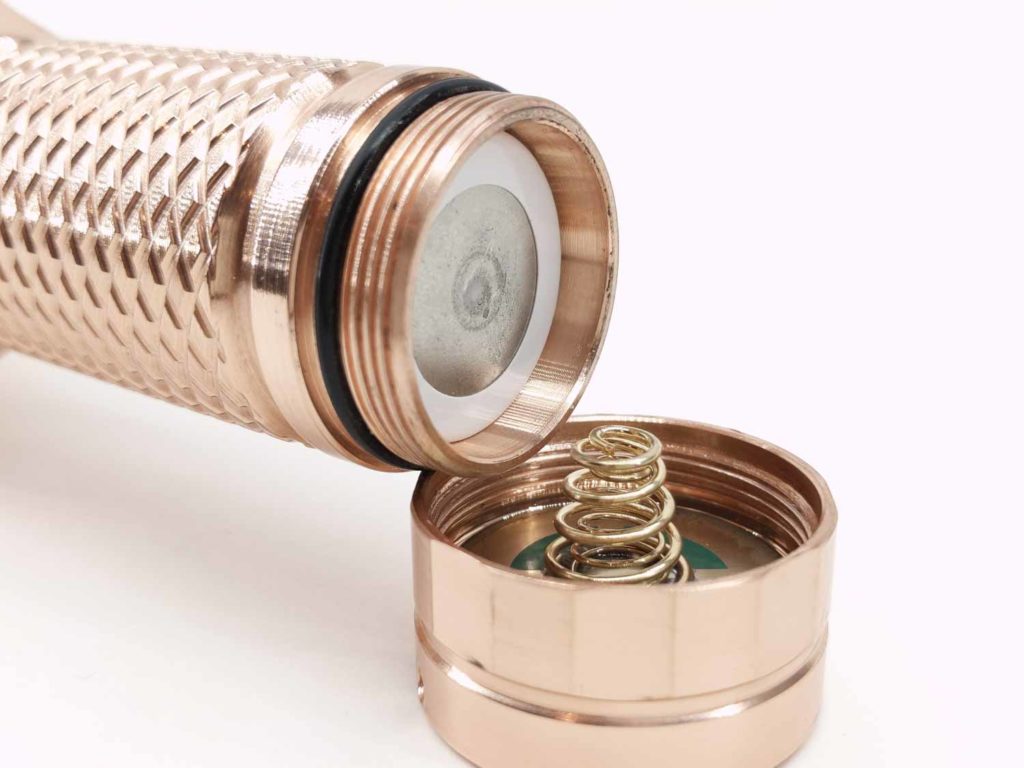
LED, Lens, Bezel, and Reflector
If there’s one thing that could challenge the “wow” factor of the copper body of this flashlight, it’s the sheer power of the Luminus SBT90.2 LED. With the SBT90.2, you can get any CCT you want… as long as you want 5700K (thanks, Henry!). This is a very “throwy”, domeless LED with lots of lumen output. It’s centered nicely in the center of a large, deep, smooth reflector. The bezel has shallow crenelations that are just deep enough to allow you to see if the flashlight is on. The reflector provides a very tight hotspot with a very wide spill.
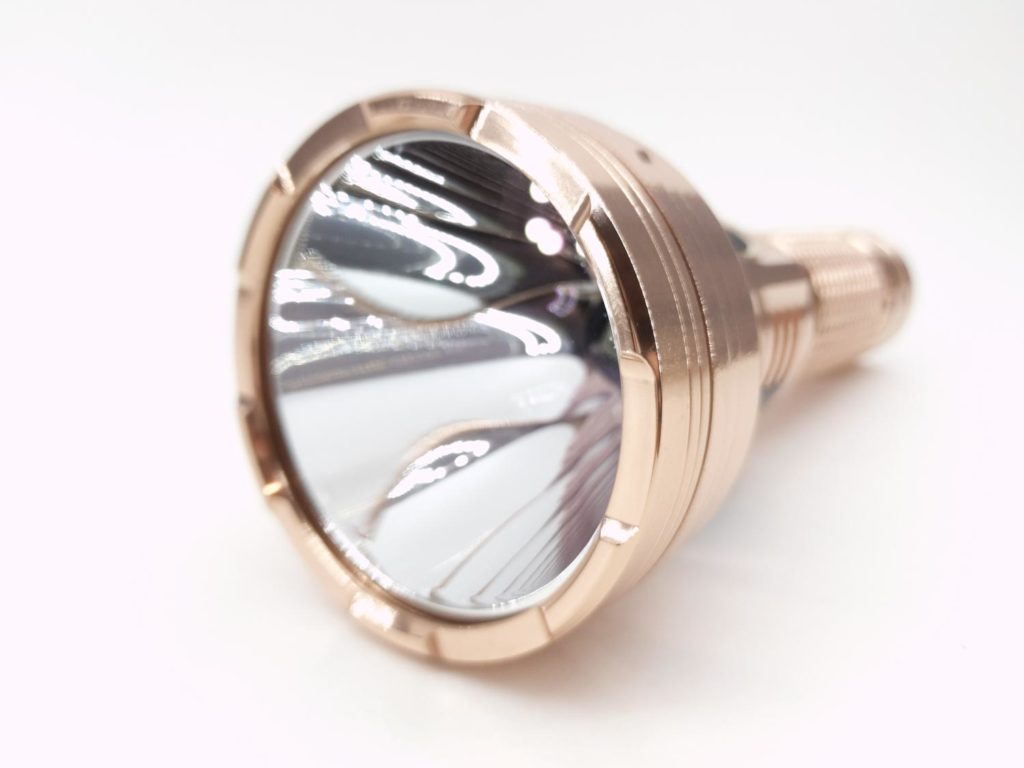
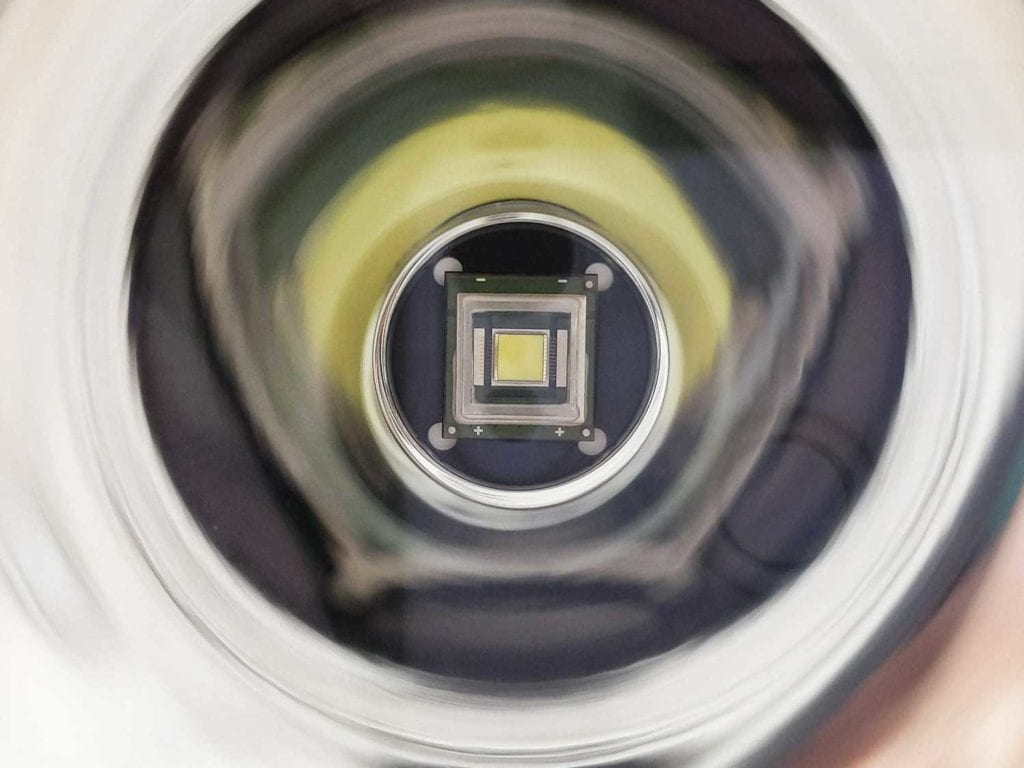
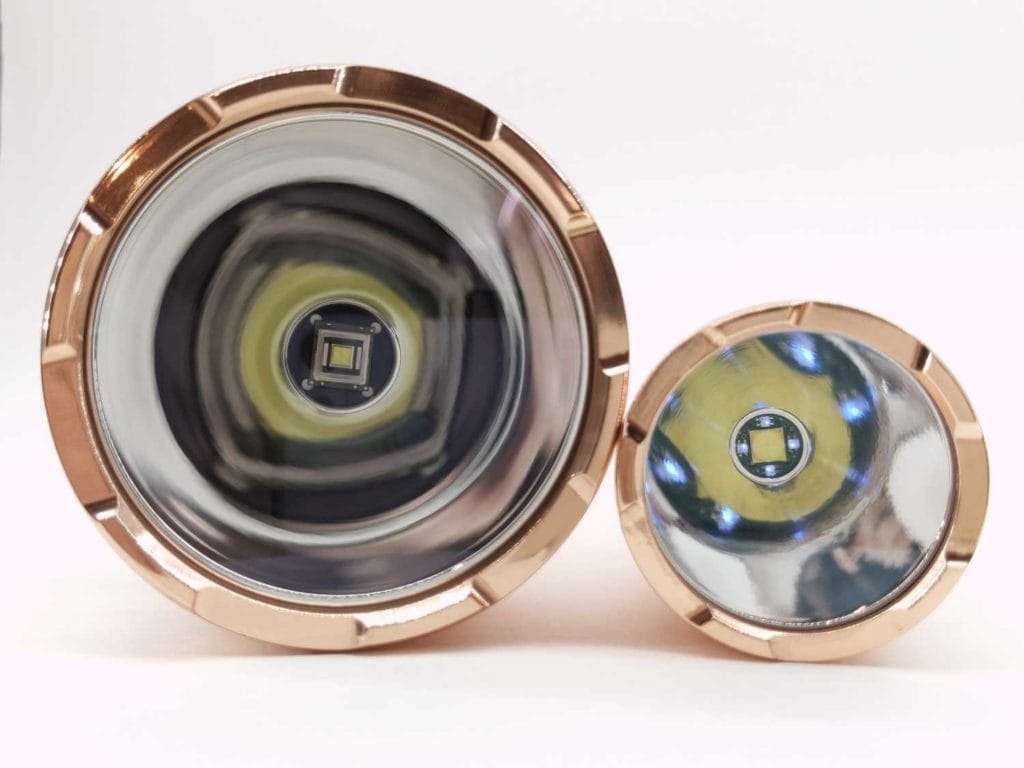
Dimensions
- Length: 170 mm / 6.7 inches
- Head diameter: 69.5 mm / 2.7 inches
- Body diameter: 34.5 mm / 1.4 inches
Weight:
- Without cells: 778 grams / 27.4 oz (In perspective: the aluminum version = 298 grams / 10.05 oz)
- With a Vapcell T50 21700: 849 grams / 30.0 oz
Flashlight comparison
Compared to flashlight throwers and other popular flashlights.
Copper brothers, from left to right: Astrolux FT03S Copper, Astrolux FT03 mini Copper
Common lights, from left to right: Astrolux FT03S Copper, Convoy L2, Convoy M21C-U, Astrolux FT03 Mini copper, Astrolux MF01 Mini, Astrolux EC01
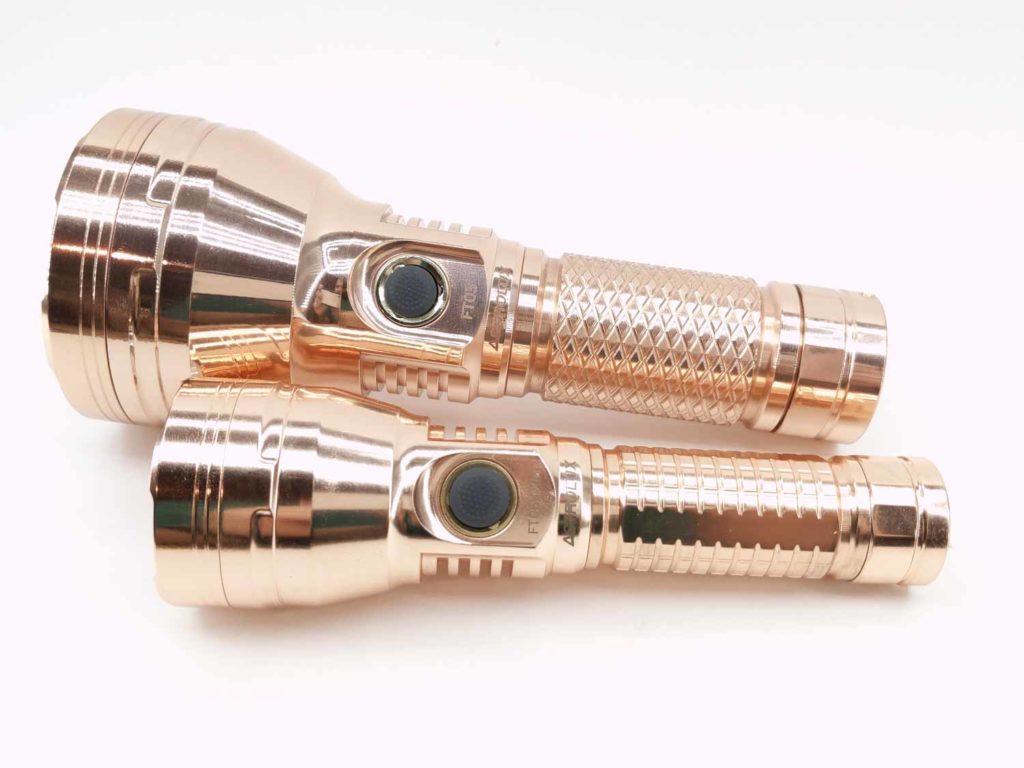
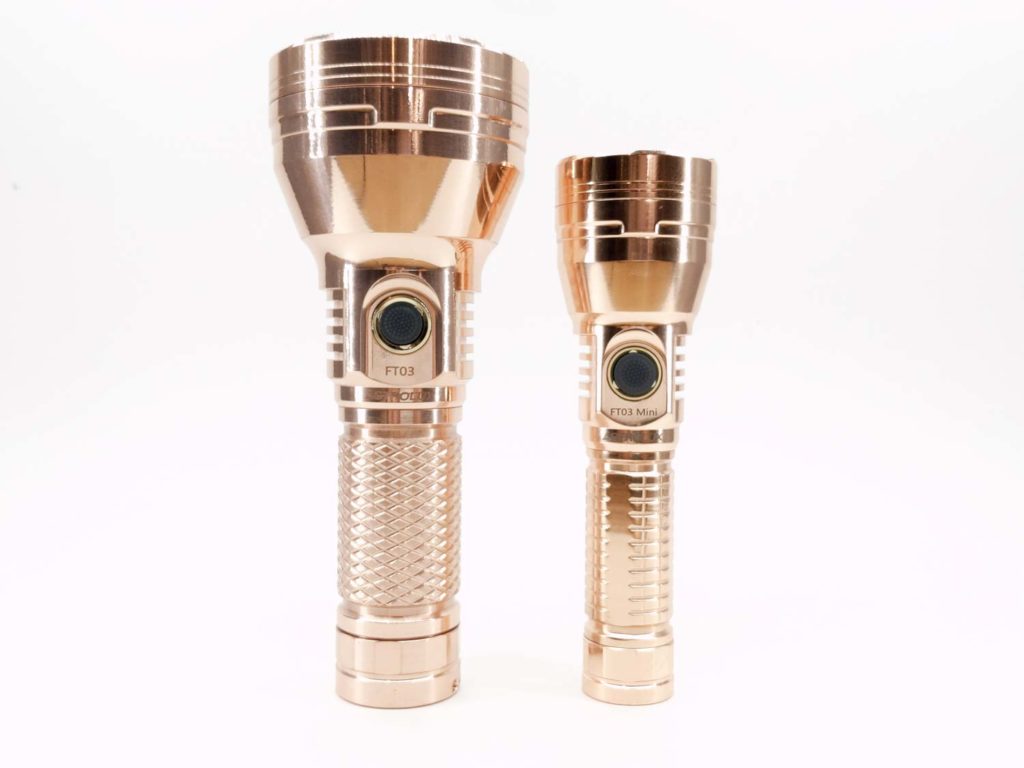
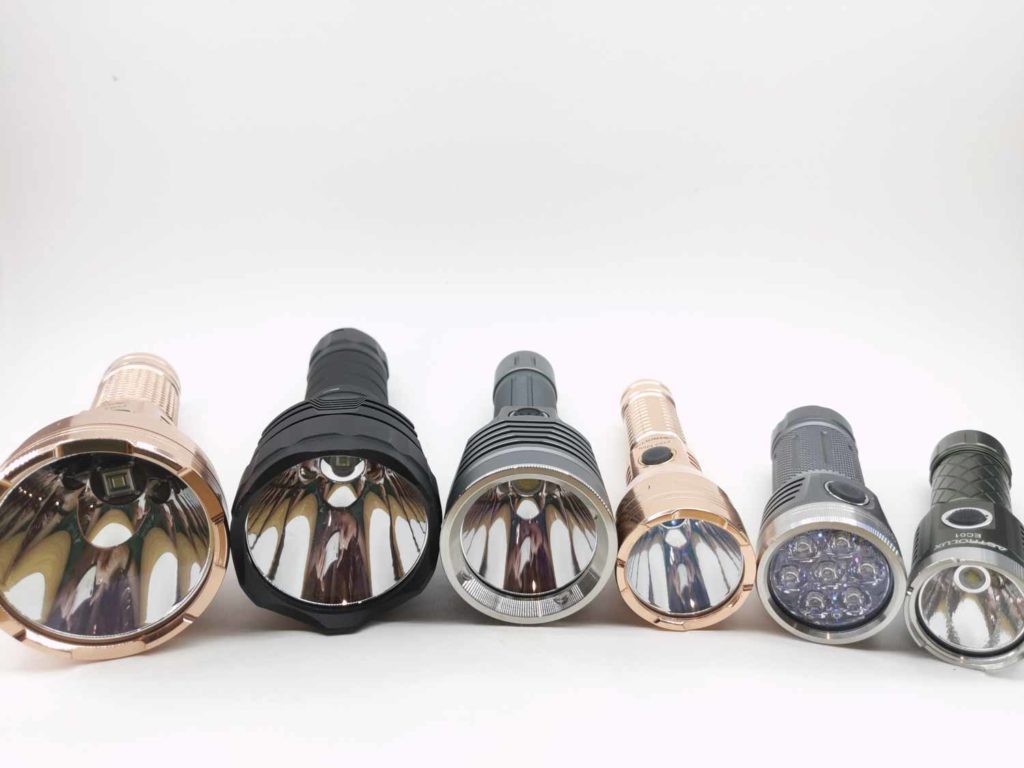
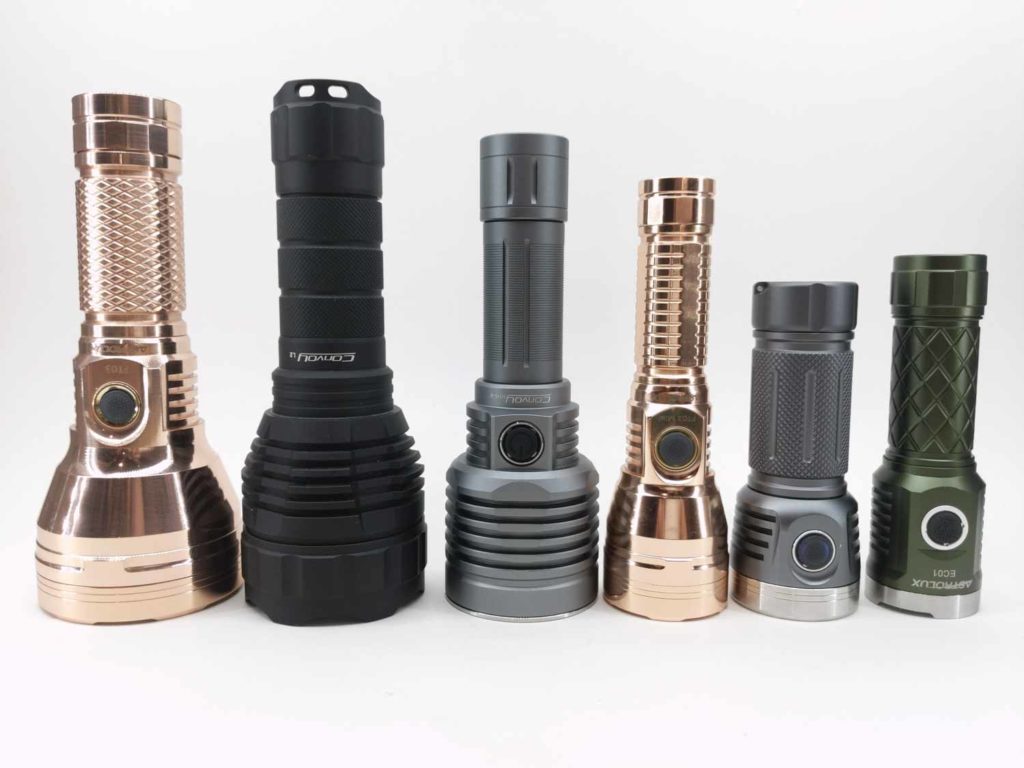
Driver & User Interface:
The driver is using a Anduril UI. This is currently one of the most advanced firmwares for flashlights at the moment.
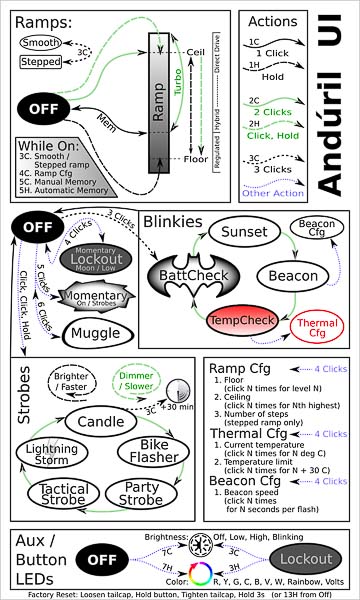
This is the image of the UI, but forget about the bottom part, because this particular light has no AUX LEDs.
From OFF:
- Single-click: ON
- Double click: High (Top of ramp, to get to Turbo, you need to do another double click)
- 3 clicks: Access the blinky/utility modes.
Enter Special/Fun modes from OFF:
- 2 clicks + hold: Strobe modes
- 4 clicks: Lock Out mode
- 5 clicks: Momentary on
- 6 clicks: Muggle mode
From ON:
- Single-click: Off
- Double click: Turbo
- 3 clicks: change ramping mode.. Instead of a smooth increase, it has 6 little steps between Lowest and Max.
- 4 clicks: change to ramping configuration mode
- Press and hold: brightness ramps up.. release and press and hold again to ramp down.
INTERESTING, SPECIAL AND FUN MODES:
Please read the manual carefully to know how to access or customize these modes. Also see the firmware picture, above.
- Blinky Utility mode:
- Battery check
- Sunset Mode
- Beacon mode
- Temperature check
Strobe / Mood modes:
When in the strobes mode, double-click to rotate between them – all modes except party strobe are brightness, changed the same way as a normal ramp. In party strobe mode, ramping up and down will increase and decrease the frequency of the strobe, for incredible effects.
- Candle
- Bike flasher
- Party strobe
- Tactical Strobe
- Lightning mode
- Lockout mode (can’t use the light)
- Lockout mode is available by clicking four times from off – while in lockout mode, click-and-hold will light up at bottom of the ramp, and a double-click-and-hold will light up somewhat brighter. This is to give you a way to quickly use the light if necessary, but if it activates in your pocket, it will only be at very low modes, and only for as long as the button is pressed. No more holes in pants!
- Momentary mode (signaling/ morse coding)
- Muggle mode: (safer for children)
- Configuration mode
- Ramp config mode
PWM
- You will be able to detect some PWM at low modes via phone camera, but as soon as it kicked in higher, it disappears. None of it was able to be detected by eye, though.
Protection Features (Low Voltage Protection)
- LVP makes the light step down to a lower level when the battery is low, and if the light is already at the lowest level, it shuts itself off. This activates at 2.8V. This won’t happen often, since the light will run for many hours before it shuts off.
- Thermal regulation attempts to keep the light from overheating, and otherwise adjusts output to stay as close as possible to the user-configured temperature limit. By default, it’s 45 degrees.
Batteries & Charging
The Astrolux FT03S Copper, like other FT03’s, is compatible with 18650, 21700, and 26650 cells. An 18650 adapter is included, but there is not an adapter for 21700. At first, I was put off by this, as my plan was to use a 21700 cell. While there is a lot of space around the battery in the tube, the double springs at both ends put enough pressure on the battery that it doesn’t rattle in my mind it seems wrong, but it works just fine. I may eventually acquire or 3D print some spacers, but for now, it works fine with 21700 as-is.
For my testing, I’m using a Vapcell T50. In testing, it has similar drain characteristics to the Molicel P42A but with 5000 mAh of capacity. I tried a long, protected 21700 with a charging circuit (an Acebeam) and it did not fit – way too long. The FT03S is not compatible with protected 21700 cells. I tried a non-protected 26650 (a Wurkkos-branded cell) and it fit with room to spare. A protected 26650 would likely fit.
There is built-in USB-C charging. I tried charging it with USB PD (USB-C to USB-C)… no dice. Using a USB-A to USB-C charging cable connected to a 2.4 amp charger, I observed a charge rate of 1.85 amp on a partially drained cell, so the 2.0 amp manufacturer spec sounds correct. When charging, the button indicator LED turns orange (or red? I dunno, I’m colorblind) and switches back to green (?) when it’s done. I would prefer some more distinct colors, please.
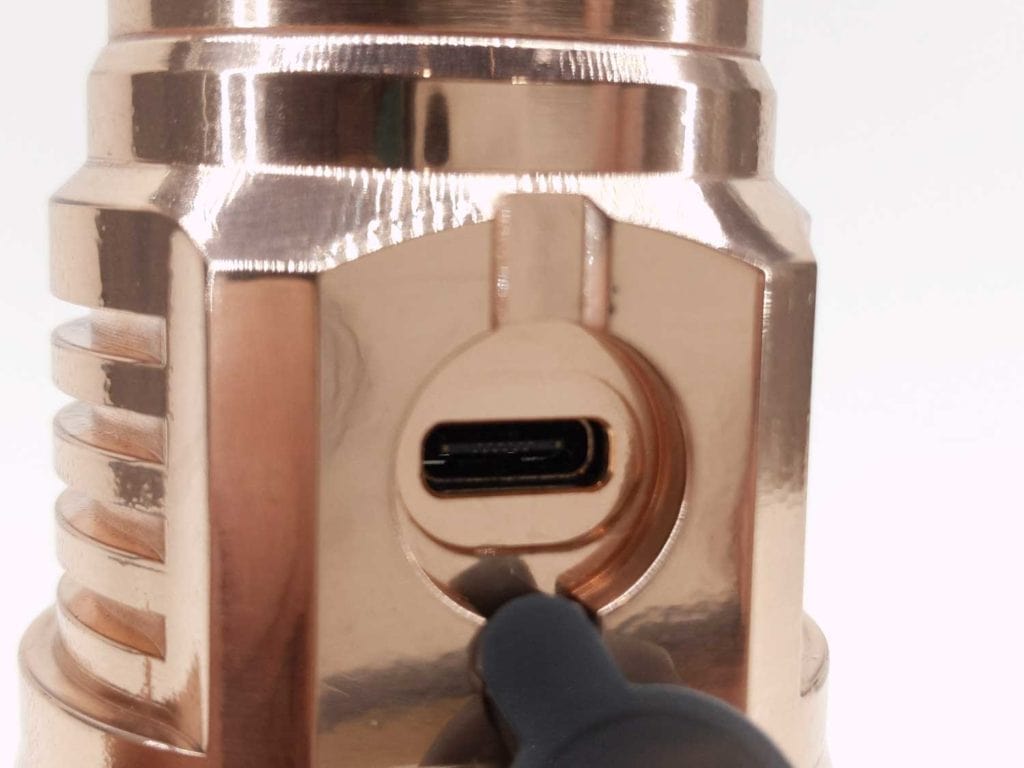


Performance
For current measurements, an ANENG AN8008 multimeter and UNI-T UT210E clamp meter were used. Lux was measured by a UNI-T UT383 BT at 5 meters. Lumens were measured in a homemade lumen tube using a TSL2591 sensor, calibrated with a Maukka calibration light. The temperature was monitored with a MLX90614 IR temperature sensor. Testing was performed using a Vapcell T50 21700 cell.
Amp & Lumen measurements
| Modes | Current@ 0 sec | Lumens@ 0 sec | Lumens@ 30 sec | Specifications:Lumens |
| Standby: no aux | 39 uA | n/a | n/a | — |
| Standby: low aux | 74 uA | n/a | n/a | — |
| Standby: high aux | 129 uA | n/a | n/a | — |
| Ramp floor | 1.7 mA | 0.2 | 0.2 | — |
| Stepped 1 | 9 mA | 3.3 | 3.3 | — |
| Stepped 2 | 53 mA | 22 | 22 | — |
| Stepped 3 | 178 mA | 78 | 77 | — |
| Stepped 4 | 463 mA | 202 | 200 | — |
| Stepped 5 | 1.1 A | 442 | 438 | — |
| Stepped 6 | 2.3 A | 952 | 939 | — |
| Stepped 7 | 7.0 A | 2432 | 2320 | — |
| Turbo | 22.3 A | 5453 | 3259 | 4500 |
Runtime graph
After calibrating the temperature (always do this before using an Anduril light!), I performed several runtime tests, some in Turbo and some at the stock Ceiling. I ran tests using the default thermal limit of 45°C. Additionally, I configured the thermal limit to 55°C and 70°C and ran more tests. It seems as if the driver stays a bit warmer than the body. For instance, when configured to 70°C, the body stayed around 56°C. This is probably because of the large thermal mass of the enormous copper body.
I would love to be able to configure an Anduril build with thermal settings that are tailored to this flashlight, but unfortunately, Astrolux has not provided the source code (and the related driver configuration settings).
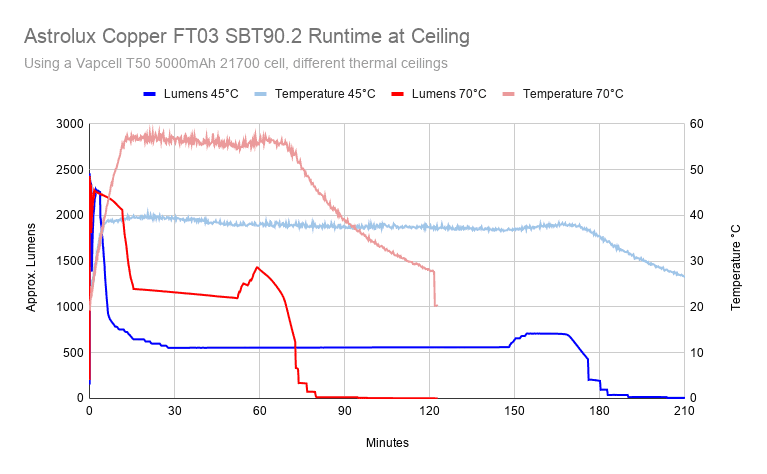
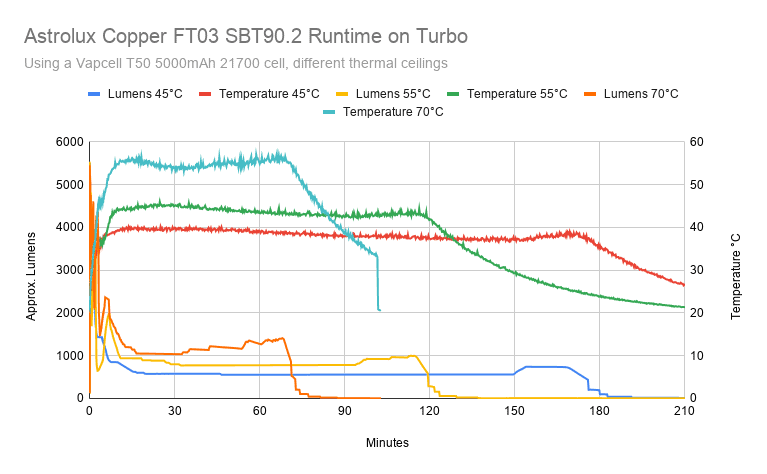
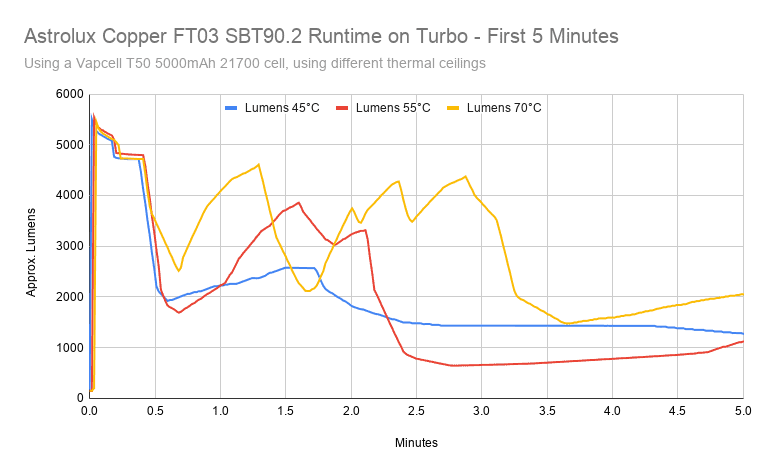
Throw numbers:
| Measurementat 10 meters | Candela | Specifications:Candela | Meters | Specifications:Meters | Yards |
| @ 0 sec | 384,407 | 510,000 | 1240 | 1428 | 1356 |
Beamshots
Outdoor beam shots are taken at 25m (82ft) using a Pixel 3 set to ISO 200 with ½ second exposure time
- Astrolux FT03s Copper with SBT90.2
- Mateminco MT07 (Astrolux MF01 Mini)
- Astrolux EC01 with SST40
- Astrolux Copper FT03 Mini with XHP50.2
- Acebeam L35 with XHP70.2
- Convoy M21C-U
- Convoy L2 with dedomed SST40



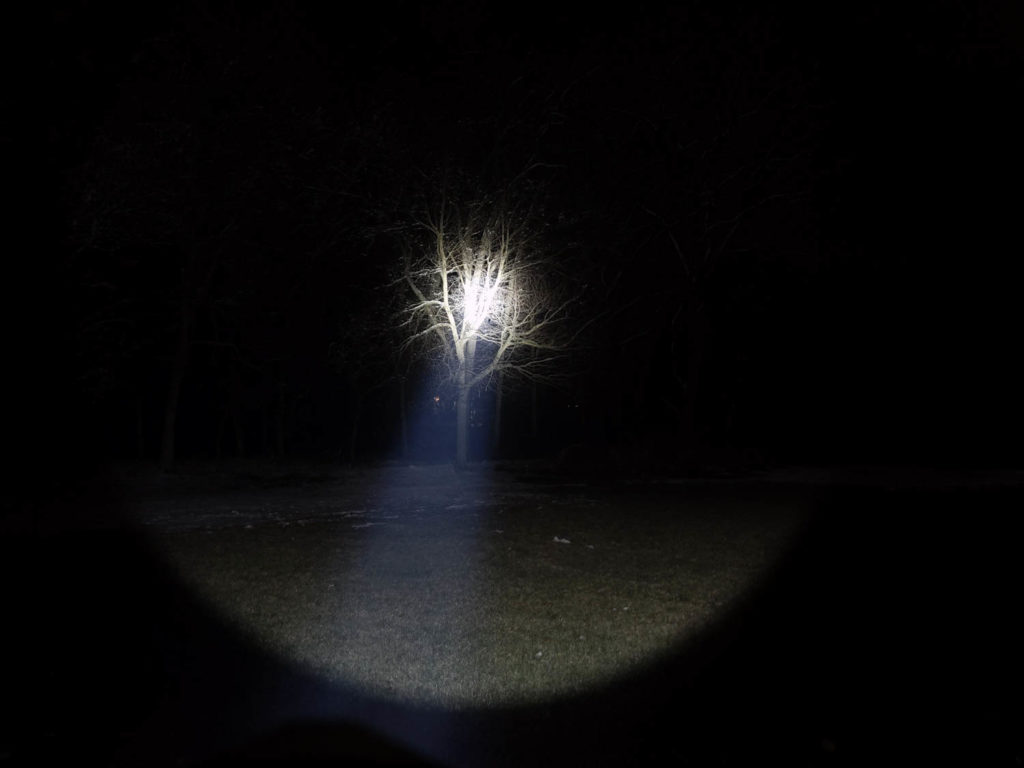

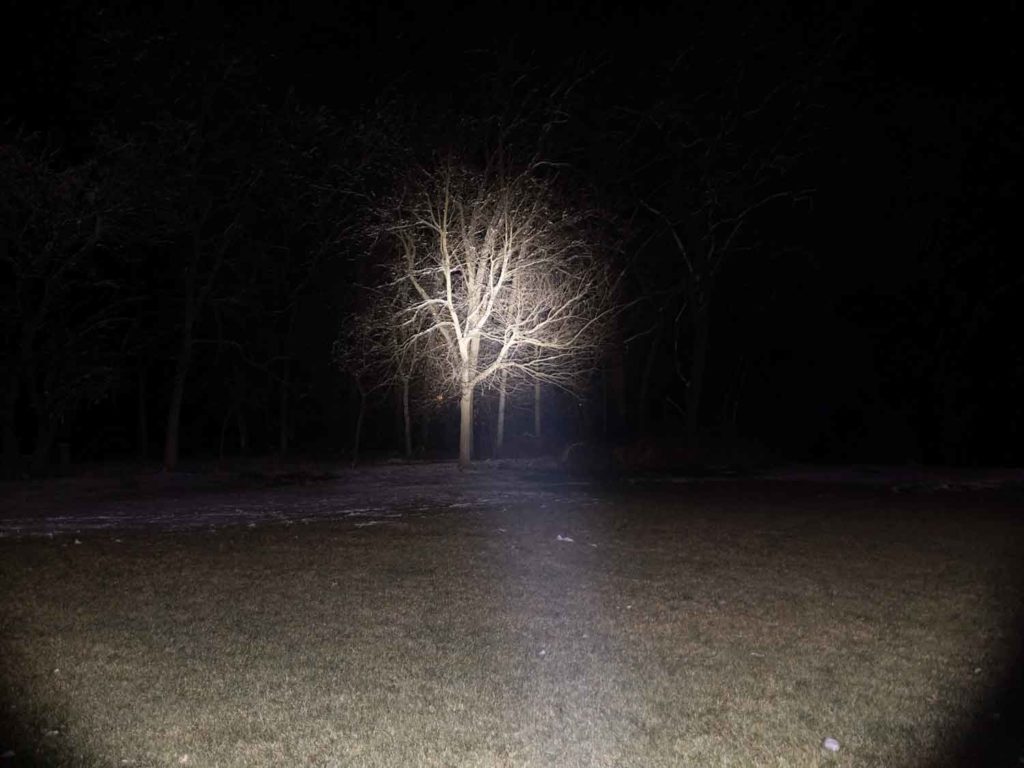

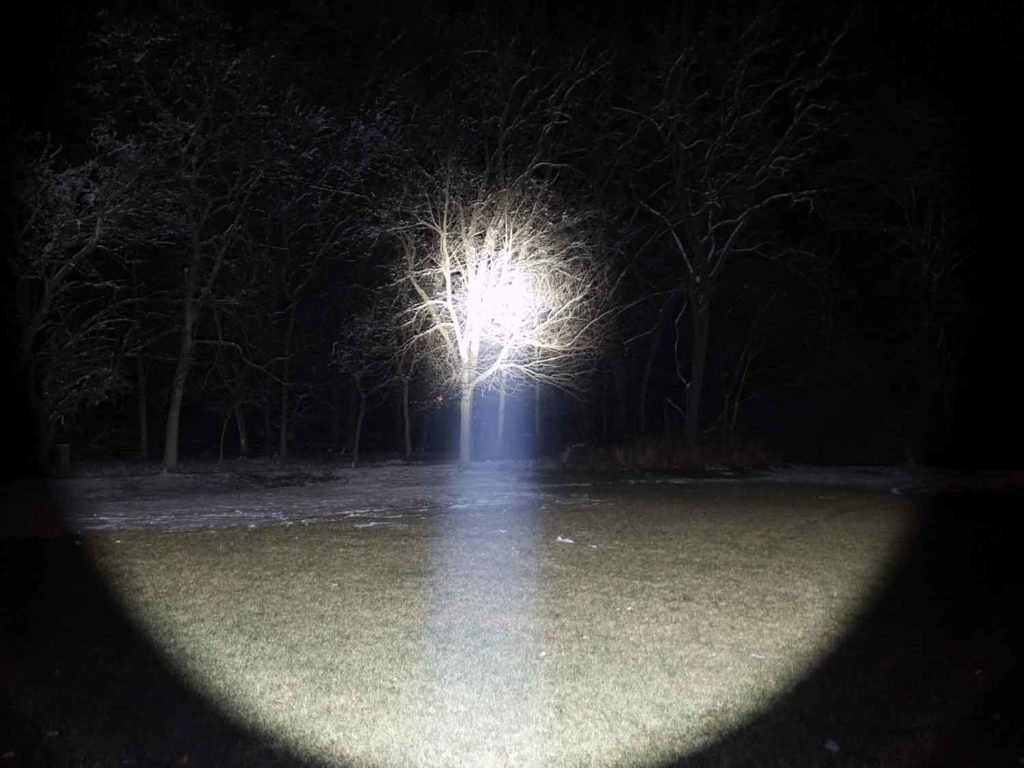
Disclaimer: This flashlight was sent to me for review at no cost by Banggood. I have not been paid to review, nor have I been holding back on problems or defects.
Final Verdict
Pros
- Gorgeous!
- Solid copper build
- USB-C charging
- Lots of throw and lumens
- Flexible UI (Anduril)
Cons
- Misses throw claims
- Not USB PD compatible
- Deserves a tailored Anduril build

4.5 stars: ★★★★⋆
The Astrolux FT03s copper with SBT90.2 deserves a solid 4 ½ stars. It’s beautiful, it’s bright, it’s throwy. The solid copper build is amazing (and amazingly heavy!). If you want a big boy, shiny show-off light, this is it. Yes, there are some things I was disappointed in. Namely, the throw numbers were way off spec. Does it throw like crazy? Yes. Does it hit 510 kcd? Nope, and I’m curious where that claim came from.
This big copper hunk can also handle quite a bit of power before it gets thermally saturated. But unfortunately, many manufactures load a generic Anduril build onto their lights that isn’t specifically tailored to that flashlight. This is one of those times where a special light like this deserves a special build.
All of that said, as long as you don’t care about the inflated 510 kcd claim, this flashlight is absolutely everything you think it would be. It just might be the one light to rule them all… my precious!
Buy your Astrolux FT03s here
The copper FT03S is no longer available. If you’re looking for a copper flashlight, check out our list with the Best Copper Flashlights. And if you’re looking for throwers, check out our list with the best throw flashlights.
1lumen selects and reviews products personally. We may earn affiliate commissions through our links, which help support our testing.